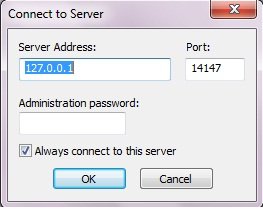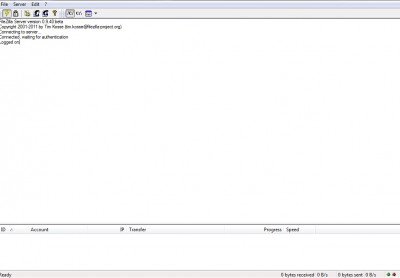

- #CREATING A WINDOWS FILEZILLA SERVER SETUP HOW TO#
- #CREATING A WINDOWS FILEZILLA SERVER SETUP FULL#
- #CREATING A WINDOWS FILEZILLA SERVER SETUP PASSWORD#
You also have full access to the creation of users and groups with FileZilla Server, which means you can throttle bandwidth for some users and not others and provide select users with permissions like read/write, but others with only read access. It's also effortless to take your server offline or quickly lock the FTP server with one click to ensure that no new connections to your server can be made until you unlock it. Some security features include auto-banning an IP address if it fails to login successfully after so many attempts, an option to enable FTP over TLS with the ability to disallow unencrypted FTP, and IP filtering so that you can prevent certain IP addresses or IP address ranges from connecting to your FTP server. You can choose which ports the program should listen on, how many users can be connected to your server at once, the number of CPU threads the server can use, and timeout settings for connections, transfers, and logins. It can administer a local server as well as a remote FTP server.
#CREATING A WINDOWS FILEZILLA SERVER SETUP HOW TO#
Again, you can Google on how to use the FTP commands from the command prompt if you want to transfer files, etc.Does not refresh folder views automatically.įileZilla Server is an open-source and free server application for Windows.
#CREATING A WINDOWS FILEZILLA SERVER SETUP PASSWORD#
I typed in my username and password and was connected! I then used the ls command to list out the contents of the directory that I gave myself access to. However, once I opened the firewall ports, I was able to connect easily using the command prompt from another local computer on my network as you can see below: I suggest Googling a bit to understand what options to use here as they will vary depending on your setup. If you’re setting this up at home, you’ll need to enable Passive mode settings also. It’s quite pointless to setup an FTP server if only people on your network can connect to it. You’ll also need to learn a little bit about port forwarding, so that users can connect from outside just your local LAN network. If you installed FileZilla to the default location, you need to allow C:\Program Files(x86)\FileZilla Server\FileZilla Server.exe to the exceptions list. Read my post on how to allow an app through the firewall in Windows. You won’t be able to connect to it until you add an exception to your firewall to allow connections for FileZilla. Turn on IP filtering to prevent IP addresses from connecting to your server.


This is ideal if you want to control the amount of usable bandwidth: You may set the download speed limits if you feel your Internet connection will be affected by your clients. Set the permission for the users, make sure to uncheck write and delete if you don’t want other users to modify your files and directories. Now to share a directory click “ Shared folders” then browse for the folders that you want to share: To assign a password, check the Password box and then type in a password for the user. On the General page, go ahead and click on the Add button at the far right. The first thing that you will need to do is create an FTP user account. It’ll give you some basic info about the server and also auto-detect if you are behind a NAT router. Once connected to the server, you’ll get a screen like below. At the end, it’ll automatically fill in the details to connect to the server, which should be localhost and the port number for the admin interface.


 0 kommentar(er)
0 kommentar(er)
